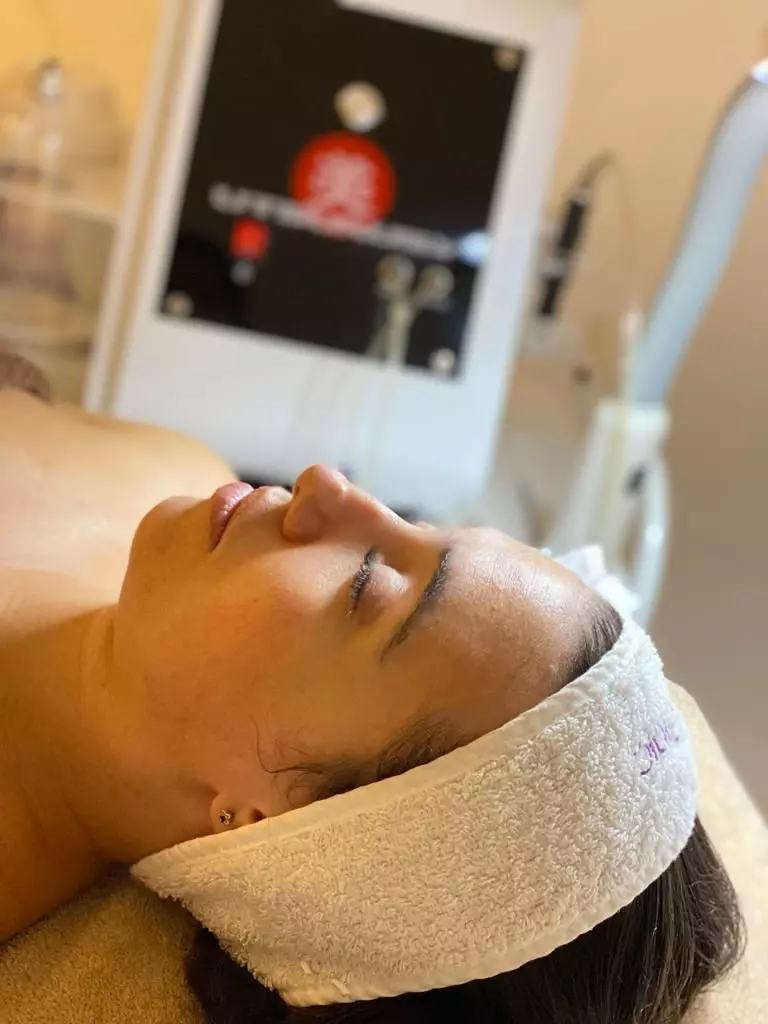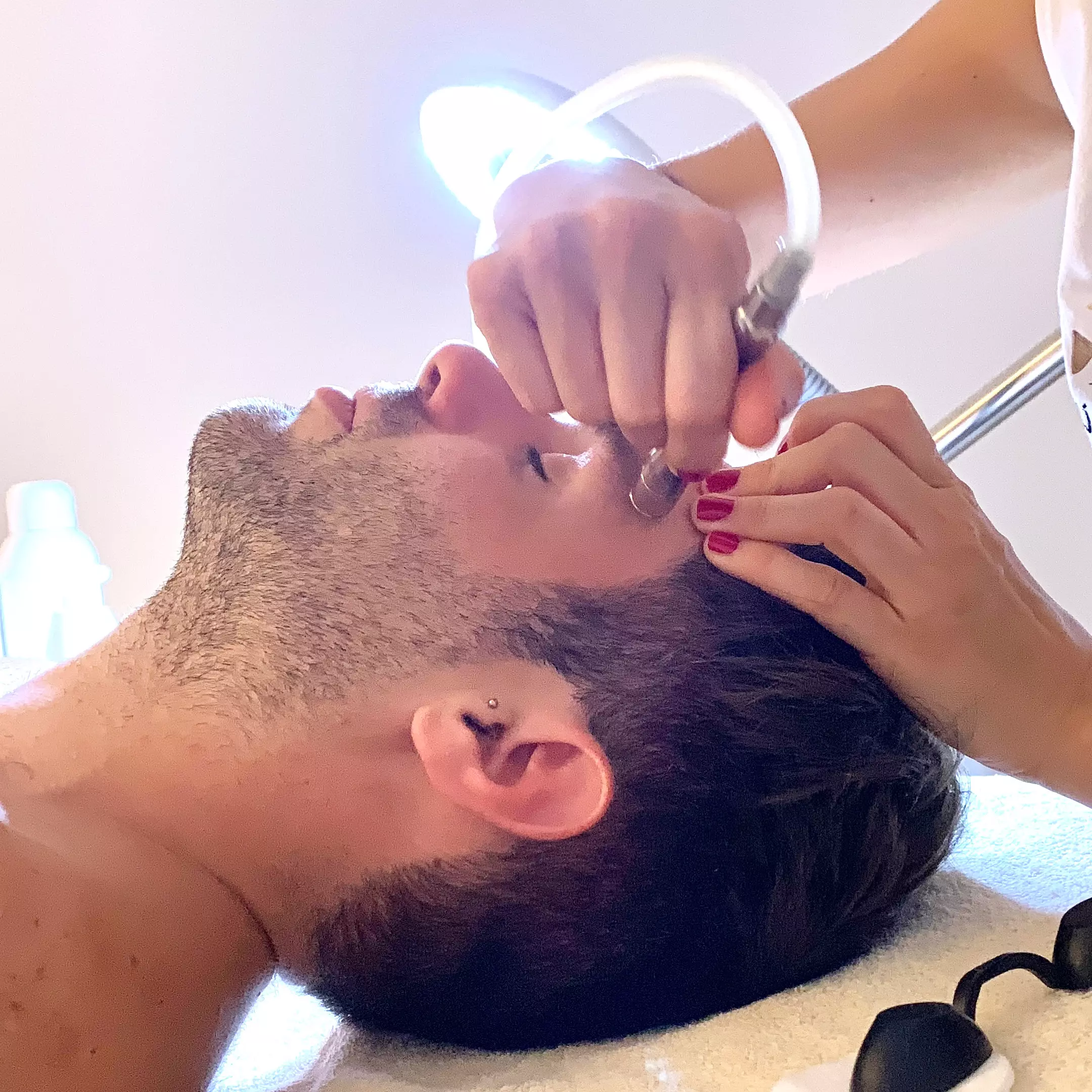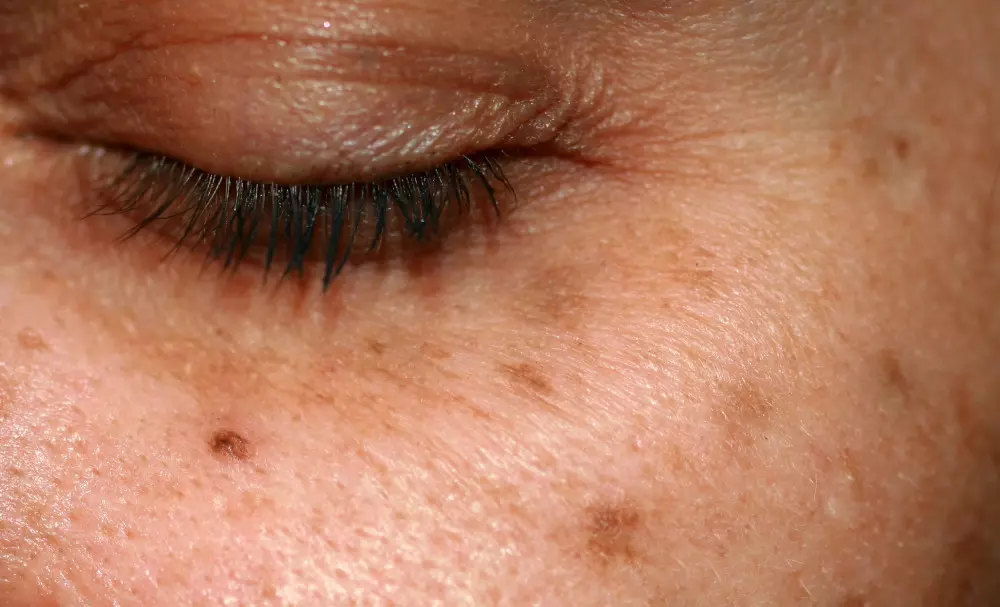
Solar Lentigo: Causes, Prevention and Treatment
The solar lentigines, commonly known as sunspots or liver spots, appear as brown spots on the skin. These small areas of discoloration often appear on the face, hands, and arms, but can also appear anywhere UV light is concentrated. There are several names for this type of discoloration, however, everyone agrees on his definition: a dark spot on the skin caused by a excessive extension in the sun.
Lentigo It comes from Latin and means "scale." Are hyperpigmented lesions (darker than normal) occur as a result of chronic exposure to ultraviolet radiation (RUV). They are not cancerous, but they can be worrisome because they signal a photo aging that has progressed beyond what is considered normal. Although they are common in people with red hair, fair skin, and blue eyes, anyone can develop them if you spend too much time in the sun without a adequate protection against UV rays. They should not be confused with freckles, since these appear (mostly) during childhood due to their own genetics, not due to sun exposure.
Read on to find out more about the causes of solar lentigines and the facial blemish removal treatments and get a perfect face. Speaking of this, if you are looking for a thread lift treatment, riding a Río-Hortega Clinic you will find the professionalism you are looking for. You can also take a look at the following blog to discover how to remove blemishes on the face:
What are the causes of solar lentigo?
The causes of solar lentigo they are diverse.
- Excessive exposure to UV light. The most common cause of solar lentigines is prolonged exposure to UV light. The greater the total lifetime UV exposure, the greater the risk risk of developing solar lentigines.
- Genetics. Some individuals are more susceptible to solar lentigines What others. It may be a genetic condition, but it cannot be ruled out that these spots on the face are the result of a combination of genetics y UV exposure.
- Vitamin D deficiency. Vitamin D deficiency has been linked to an increased risk of solar lentigines.
- Age. As we age, our skin becomes thinner and less elastic. The thinner and less elastic the skin, the more likely it is to develop solar lentigines. In the following blog you have the information you need about the facial rejuvenation, treatment that you will find in the menu of services of Río-Hortega Clinic.

Who is at risk of developing solar lentigines?
Anyone can develop solar lentigines, but some people are at higher risk. These include people who are red-haired and fair-skinned, as well as those with a family history of this type of facial spots. If you have a job that requires you to be outdoors, you are more likely to develop them.
Use a sun cream with an SPF at least 30Wearing clothing and accessories that cover exposed areas, and avoiding the sun between 10 a.m. and 3 p.m., when it is strongest, can help keep the risk of developing these types of spots low.
How to prevent solar lentigines?
As with everything related to skin care, hygiene and face protection they are the key. There are a few ways to prevent the development of solar lentigines:
- stay out of the sun. The best way to prevent the appearance of these spots is to avoid the sun. When it comes to the sun, it's important to remember that not all skins are the same. Similarly, not all sun creams They are equal. Many people think that they don't need to use sunscreen because it never burns their skin, but this is a serious mistake. Even in winter one has to apply sun cream. Although it is true that the use of sun cream does not guarantee that they will not occur solar lentigines, not using it greatly increases the risk.
- Use sun cream. Linked to the previous point and although it is redundant, we must insist on the importance of applying sunscreen. Also, this is especially important if you have the sensitive skin, since it is more vulnerable to damage from the sun. If you have pale skin and burn easily, you should use sunscreen daily, even on cloudy days. Although the use of sunscreen will not prevent you from getting burned if you are in the sun long enough, it will help prevent further damage and the development of solar lentigines. If you have any questions about the type of skin you have and need dermatological advice, contact Río-Hortega Clinic. The clinic has a dermatology area made up of the best professionals in the specialty. You may also be interested in the following blog:
- Wear protective clothing. Although the sun cream helps protect the skin, it never hurts to prevent more. Wearing clothing that covers the skin, a hat, and sunglasses can go a long way to prevent sun spots on the face.
How to treat solar lentigines
El solar lentigo treatment o spots on the skin It depends on their severity. The first thing you should do is prevent them from getting worse. A topical retinoid cream or a alpha hydroxy acid cream may be helpful in reducing the appearance of these brown spots on the skin.
To remove them, you can also use a chemical peeling, a dermabrasion or a microdermabrasion to make them less visible. You can also use a cream for blemishes on the face. Keep in mind that these treatments are not one-time; most require maintenance to prevent stains from reappearing.
A super-effective treatment is the one that offers Río-Hortega Clinic: E-LIGHT Photorejuvenation, an innovative treatment that does not harm the health of your skin. More and more people are coming to the facial rejuvenation, so it is not surprising that this treatment is making a wide gap in the aesthetic medicine clinics.
Conclusion
The solar lentigines o spots on the skin They can appear anywhere on the body that has been exposed to UV rays, but they are most common on the face, hands, and arms. Although they occur as a result of chronic exposure to UV rays, it is not the only factor to consider. Follow the instructions on this blog and do not hesitate to contact a specialist to advise you when it comes to remove these brown spots on the skin.
Trust us
In our Clinic in Santa Pola you can recover the vitality and luminosity of your skin. Contact us from our website and fill in the form. You can book your appointment by phone / WhatsApp 648 116 134, or write to info@clinicadelriohortega.es. We are at C/ Almirante Antequera 34, Santa Pola, Alicante.









